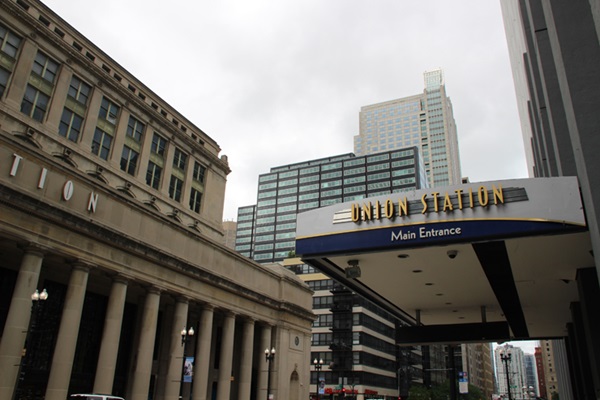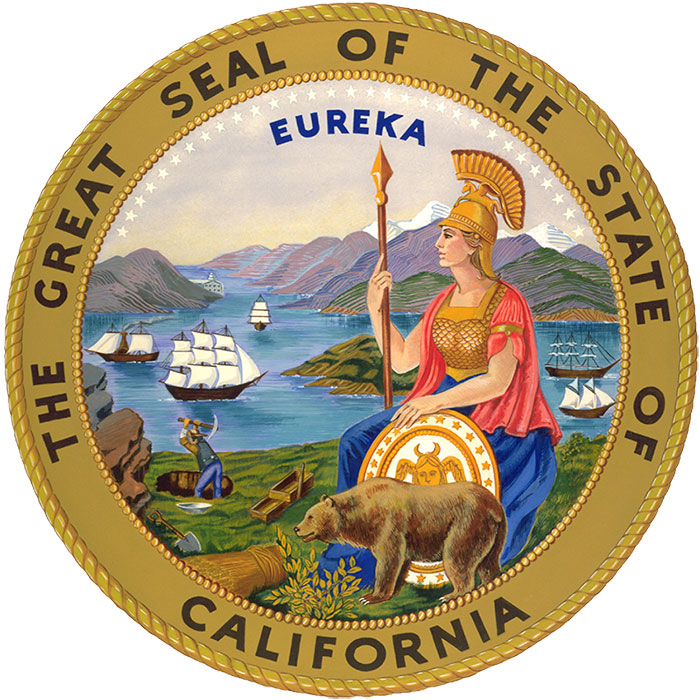
CHICAGO — Amtrak officials will meet with representatives of the city of Chicago after again voicing concerns about the prospect that the area adjacent to Chicago Union Station could be asked to serve as the temporary hub for Greyhound bus service.
After Amtrak President Roger Harris sent a letter on Tuesday, Aug. 13, to Mayor Brandon Johnson and Transportation Commissioner Thomas Carney — expressing “significant concerns” with use of a section of Jackson Boulevard next to Union Station and presenting bus facilities next to two Metra stations as alternatives —Carlos Ramirez-Rosa, alderman for Chicago’s 35th ward, intervened today to set up a meeting, an Amtrak spokesman said in an email.
A date for the meeting has yet to be determined.
Greyhound is likely to be displaced from its current downtown depot this fall, and the city has indicated it considers the Union Station area the best place to relocate the intercity bus service on a temporary basis. Amtrak in a statement last week, said it had not been contacted about that plan and expressed concern about congestion in the area, among other issues [see “Chicago may ask Union Station to house Greyhound passengers,” Trains News Wire, Aug. 9, 2024].
Harris’ letter noted the “significant security and facility costs” that Amtrak, the owner and operator of Union Station, would likely incur from “the use of our station by hundreds of new daily intercity bus customers. Without an agreement to appropriately compensate us and mitigate any impacts, these costs and impacts would be borne by Amtrak and our customers — and indirectly by Metra and our other tenants who share in our expenses at the facility.” Harris also cited congestion, capacity, and community concerns about “crime, traffic congestion, and increased demand for services.”
The letter and an accompanying PowerPoint presentation offered two alternative sites:
— Two protected bus lanes under the Oglivie Transportation Center on Washington Boulevard, the terminal for Metra’s three Union Pacific lines, as well as 13 bus routes and two CTA rail lines. The rail station, at 500 W. Madison St., shares its address with the 42-story Accenture Tower and has a number of shops and restaurants.
— A bus lane adjacent to Metra’s LaSalle Street station at 414 S. LaSalle. That terminal for the Rock Island District is far less developed than either Union Station or Oglivie, but has a bus lane on Financial Place used by only one CTA route. (A dozen others are nearby, as are several CTA rail lines.)
“These locations — and others — would certainly provide a safer experience and improved accomodations for incercity bus riders than that block of Jackson Boulevard,” Harris wrote.
A Metra spokesman said today his agency had just received the letter and had no comment at this time.














Curious to know why Greyhound will be displaced from their current Chicago location in the fall? Is this by the city’s doing or Greyhounds? Here in Philadelphia Greyhound decided to just close down their aging terminal (also used by NJ Transit) rather than make major renovations. They tried curbside pickup at multiple locations and for obvious reasons it was a disaster for patrons. Now the city is tasked to find them a new home (including talk of building a permanent bus station next to 30th St. Station. Greyhound, Megabus, Flexbus, etc, are all for-profit companies. If they want terminal space in a major city they need to go through the same process and anyone else and pay for it.
Greyhound’s vulture capital owners sold the station and leased it back, figuring – apparently correctly – that when the buyers had a higher purpose in mind for the real estate, they could fob off the problem of where their buses stopped to the city. This has been their pattern all over the country, in big cities and small towns (including mine). The first rule of 21st century business: privatize the profits, socialize the expenses.
I remember Megabus outside Union Station. Waiting passengers also swarmed a nearby Duncan Donuts for use as a waiting room. I believe the Oglivie option is something that warrants a serious looking at. Buses can load and unload in a sheltered environment. Oglivie offers more options as far as food and retail. It is also very near Union Station. Various possibilities as far as connecting public transportation.
Philadelphia was similar. Megabus and the other dirt cheap ones loaded curbside on JFK Blvd just West of 30th St. (both the street and the statiron). None of them had any facilities and people sat on the sidewalk or curb. If they needed plumbing, heat or a real place to sit, they went inside the station (funded by Amtrak and SEPTA). The beeses blocking the street and the people blocking the sidewalk were a traffic hazard and the City eventually forced them out of there.
I believe they tried something similar in NY City but the City forced them into Port Authority Bus Terminal where they had to pay (Oh the horror!) for the facilities they were using.
Move Greyhound to METRA LaSalle Street? Couldn’t be any worse than what’s there now.
METRA RAIL has let LaSalle Street “Station” on its Rock Island District fester as if a third-world bus station. Seems good enough for what’s likely METRA’s lowest income, most heavily minority contingent of passengers.
As for CUS, I’m sure that Amtrak will eventually give in to Chicago politicians who will be supported on January 20th of next year by the incoming federal administration.
How quickly we forget. When Megabus initially entered the Chicago market, bus passengers crowded inside the Canal Street entrance of CUS to wait for their bus. This action made it difficult for Amtrak and Metra passengers to gain entrance or exit, particularly during rush hours. As well, the bus contingency required additional police officers and housekeeping efforts.
As downtown was not designed to be for curbside pick-up, let Megabus pay the city to use a bus bay at the CTA bus turnaround, across from CUS. It is not acceptable to enable a bus line to hype its lower fares by mooching off of other operations, particularly if competitive to Greyhound.